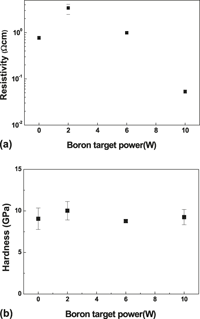Crossref Citations
This article has been cited by the following publications. This list is generated based on data provided by
Crossref.
Zahid, Rehan
Masjuki, Haji Hassan
Varman, Mahendra
Kalam, Muhammad Abul
Mufti, Riaz Ahmad
Mohd Zulkifli, Nurin Wahidah Binti
Gulzar, Mubashir
and
Nor Azman, Siti Safiyah Binti
2016.
Influence of intrinsic and extrinsic conditions on the tribological characteristics of diamond-like carbon coatings: A review.
Journal of Materials Research,
Vol. 31,
Issue. 13,
p.
1814.
Zahid, Rehan
Hassan, Masjuki Bin Haji
Varman, Mahendra
Mufti, Riaz Ahmad
Kalam, Md. Abul
Zulkifli, Nurin Wahidah Binti Mohd
and
Gulzar, Mubashir
2017.
A Review on Effects of Lubricant Formulations on Tribological Performance and Boundary Lubrication Mechanisms of Non-Doped DLC/DLC Contacts.
Critical Reviews in Solid State and Materials Sciences,
Vol. 42,
Issue. 4,
p.
267.
Dong, Hongming
He, Shuai
Wang, Xinzhu
Zhang, Caizhi
and
Sun, Deen
2020.
Study on conductivity and corrosion resistance of N-doped and Cr/N co-doped DLC films on bipolar plates for PEMFC.
Diamond and Related Materials,
Vol. 110,
Issue. ,
p.
108156.
Ghadai, Ranjan Kr
Das, Soham
Kalita, Kanak
Shivakoti, Ishwer
Mondal, Subhas Ch
and
Swain, Bibhu P.
2021.
Effect of nitrogen (N2) flow rate over the tribological, structural and mechanical properties diamond-like carbon (DLC) thin film.
Materials Chemistry and Physics,
Vol. 260,
Issue. ,
p.
124082.
Sharifahmadian, Omid
Pakseresht, Amirhossein
Amirtharaj Mosas, Kamalan Kirubaharan
and
Galusek, Dušan
2023.
Doping effects on the tribological performance of diamond-like carbon coatings: A review.
Journal of Materials Research and Technology,
Vol. 27,
Issue. ,
p.
7748.
Basit, Muhammad Abdul
Zafar, Ramsha
and
Haider, Nawal
2025.
Applications of Diamond‐like Carbon Coatings.
p.
71.
Kalakonda, Pranay
Narayan, Jagdish
and
Narayan, Roger J.
2025.
Applications of Diamond‐like Carbon Coatings.
p.
31.
